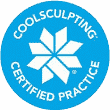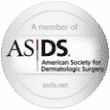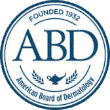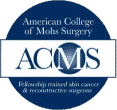Acne
is a very common skin problem that shows up as outbreaks of bumps called pimples or zits. Acne usually appear on the face, neck, back, chest, and shoulders. Acne can be a source of emotional distress, and severe cases can lead to permanent acne scars..
What causes acne?
Acne begins when the pores in the skin become clogged and can no longer drain sebum (an oil made by the sebaceous glands that protects and moisturizes the skin.) The sebum build-up causes the surrounding hair follicle to swell.
Hair follicles swollen with sebum are called comedones. If the sebum stays beneath the skin, the comedones produce white bumps called whiteheads. If the sebum reaches the surface of the skin, the comedones produce darkened bumps called blackheads. This black discoloration is due to sebum darkening when it is exposed to air. It is not due to dirt, both whiteheads and blackheads may stay in the skin for a long time.
Bacteria called Propionibacterium acnes (P. acnes) that normally live on the top of the skin can enter the clogged pores and infect the sebum. This causes the skin to become swollen, red, and painful.
Infected sebaceous glands may burst, releasing sebum and bacteria into the surrounding skin, creating additional inflammation. In severe cases, larger nodules and cysts may form in the deeper layers of the skin.
What are the different types of acne?
Acne can be categorized by its severity:
Mild acne describes a few scattered comedones (whiteheads or blackheads) with minimal inflammation (no pustules).
Moderate acne describes a denser collection of comedones as well as red, inflamed, pus-filled lesions (pustules).
Severe acne, also called nodular or cystic acne, describes widespread and deep lesions that are painful, inflamed, and red. This form of acne is likely to lead to scarring if left untreated.
Who gets acne?
Anyone at any age can get acne. Acne in teenagers is very common because the surging hormone levels (androgens) associated with puberty create more active sebaceous glands. Acne in adults is also very common, especially among women.
Acne is more likely to afflict people whose parents had acne.
What factors make acne worse?
Acne lesions can come and go. These factors can cause acne to worsen:
- Changing hormone levels in women 2 to 7 days before their menstrual period, during pregnancy, or when starting or stopping birth control pills
- Oil from skin products (moisturizers or cosmetics) or grease in the workplace (for example, a kitchen with fry vats)
- Pressure from sports helmets or equipment, backpacks, tight collars, or tight uniforms
- Environmental irritants, such as pollution and high humidity
- Squeezing or picking at blemishes
- Hard scrubbing of the skin
Reviewed and recommended by: Dr. Alia S. Brown













